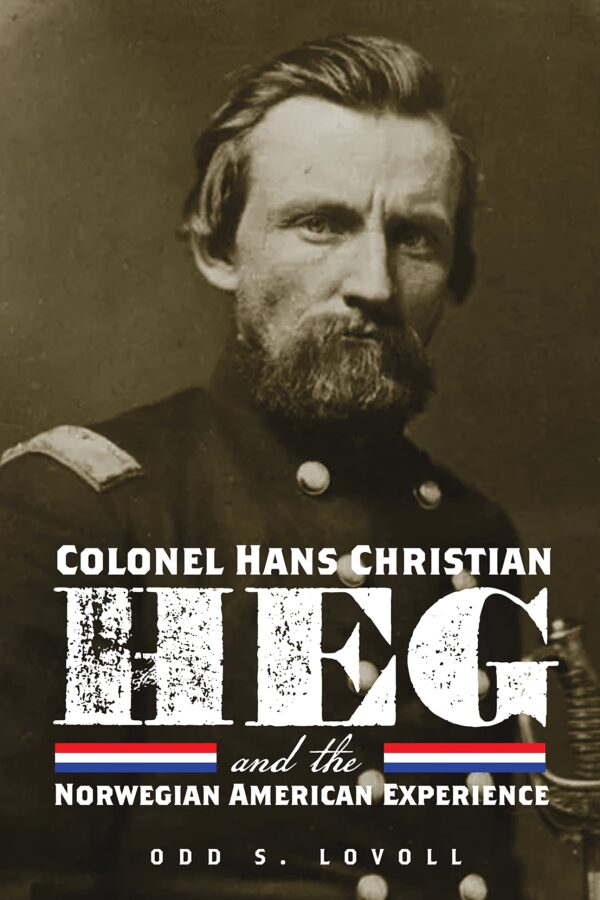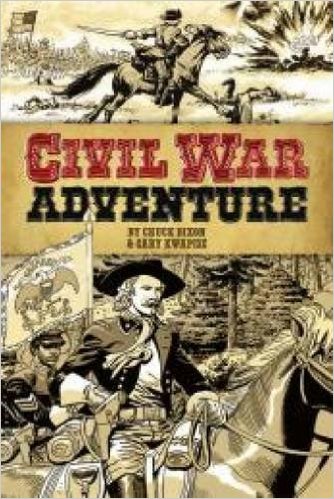Colonel Hans Christian Heg and the Norwegian American Experience by Odd S Lovoll. Minnesota Historical Society Press, 2023. Paper, IBSN: 978-1681342504. $19.25.
 Tens of thousands of foreign-born and first- or second-generation immigrants served in the U.S. Army during the Civil War. Historians have focused extensively on large immigrant groups, like the Germans and the Irish. Recent works, such as Anders Bo Rasmussens’ Civil War Settlers: Scandinavians, Citizenship, and American Empire, 1848–1870, have reminded us that there were others. Odd S. Lovoll’s biography of Hans Christian Heg adds to this well-established literature.
Tens of thousands of foreign-born and first- or second-generation immigrants served in the U.S. Army during the Civil War. Historians have focused extensively on large immigrant groups, like the Germans and the Irish. Recent works, such as Anders Bo Rasmussens’ Civil War Settlers: Scandinavians, Citizenship, and American Empire, 1848–1870, have reminded us that there were others. Odd S. Lovoll’s biography of Hans Christian Heg adds to this well-established literature.
Inspired by a very personal plea from James T. Heg, a descendent of Hans Christian Heg, after protesters in Madison, Wisconsin, tore down, mutilated, and sunk the Hans Christian Heg statue, Lovell set out to illustrate that Heg is worth studying because he “left a lasting legacy” (3). He crafts Heg’s biography around the premise that Heg was a “hero, immigrant, civic leader, abolitionist, patriot, husband and father” and not to mention “the highest-ranking Wisconsin soldier to give his life in the Civil War” (179).
Importantly, Lovoll starts Heg’s biography in Europe, pointing out that it is important to understand an immigrant’s European origins. Lovoll’s first chapter vividly illustrates the difficulty involved with such an undertaking, as the Heg family is submerged in stories about Norwegian agricultural, religious divisions, and the appeal of the western parts of the United States.
Once in Wisconsin, Lovoll explains how frontier environments shaped the creation of communities, religious establishments, and the disputes arising from land speculators selling swamps to the gullible newcomers. Readers who are familiar with Stephen Kantrowitz’s new book on the Ho-Chunk people will wonder about the Native people who were forced off the land so these Norwegians could establish their farms. Similarly, as Rasmussen makes clear in his book, people from Scandinavia viewed Native Americans as obstacles. Lovoll talks about none of this, instead focusing on the challenges faced by the Heg family as they created a political dynasty in the town of Norway.
The young Hans Christian Heg bought into gold fever and went for two years to California. Sadly, Lovoll never tells us how successful the young Heg was, despite his writing many letters about the easy riches. Upon his father’s death, Heg took over the family farm, but eventually branched out into politics and newspaper publishing. While prison commissioner, Heg gave protection to Sherman Miller Booth, who assisted a runaway slave and had thus fallen fowl of the Fugitive Slave Act. Lovoll leaves readers uncertain whether Norwegians were anti-slavery because they saw the peculiar institution as an affront to the national ideal (despite caring little for the enslaved), or whether Heg was indeed abolitionist. Nevertheless, this section sets up Heg as an influential member of the Norwegian community in Wisconsin allowing for his colonelcy in the 15th Wisconsin.
While Chapter 4 promises the story of the 15th Wisconsin, well over half the chapter is about ethnic regiments in general. Furthermore, Lovoll focuses on the formation of the regiment and recruitment of specific individuals like Claus C. Clausen as reverend. From there, the regiment fought along the Mississippi River at Island No. 10 and with the Army of the Cumberland at Perryville, Stones River, and Chickamauga. Lovoll claims that “Colonel Heg was without any question recognized for his wartime bravery and leadership,” (154) but readers get very little sense of what transpired in those battles. Sadly, half the chapter on Heg’s wartime record is devoted to his death at Chickamauga, what the 15th Wisconsin did after Chickamauga, and, befitting the origins of the book, the public memory surrounding Heg.
Lovoll provides an extraordinary amount of context, often losing focus of his main subject, Hans Christian Heg. As much as Lovoll provides a glimpse at Heg and the Norwegian community’s involvement in the Civil War, this reviewer would have liked more critical engagement with Heg and his beliefs. Was he really an abolitionist, or was he like many Scandinavians supportive of the westward focus of the Republican Party and its Free Soil ideology? This is especially pertinent as Heg during the war employed an African American servant whom he called in letters home “a good n*****” and “a monkey” (Rasmussen, 214-215).
Similarly, there are some major holes in the bibliography of the Civil War, including but not limited to the Official Records. Those interested in the Civil War—especially the nitty gritty of camp life and fighting—will find Lovell’s biography disappointing. While Lovell’s biography is a welcome new work shining light on a relatively unknown character, the author wrote this book with an agenda. The biography is lacking in critical engagement with its subject and would be best read in conjunction with Anders Bo Rasmussen’s Civil War Settlers.
Niels Eichorn is an historian of the U.S. Civil War era. He is the author of Liberty and Slavery: European Separatists, Southern Secession, and the American Civil War, among other titles.
